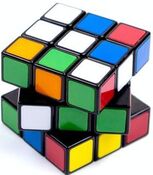|
10/14/2020 What is ADD? What is ADHD?Hello! My name is Patti Weiss, and I am a licensed neuropsychologist in San Francisco, California. This is the first of a series of blogs dealing with subjects that frequently come up in my practice. For this first blog, let’s look at attention deficit (hyperactivity) disorder. This is also known as ADD or ADHD. What are the signs of ADD and ADHD? For mild and moderate attention deficit disorder, the symptoms are problems with concentration, attention and memory. There are also problems with sitting still for long periods of time (in class for children and teens, and in office meetings for adults). There are also difficulties with focusing on different subjects at school or at work. What are the types of ADD and ADHD? There are two types of biological attention deficit disorders: Attention Deficit Disorder (mainly with inattentive features) and Attention Deficit Hyperactivity Disorder (with inattention and difficulty physically sitting still for extended periods of time in a classroom or a work meeting). How does one get tested for ADD and ADHD? Usually one goes to a psychologist for an assessment. This usually consists of two to three sessions. The best test for ADHD and ADD is known as the TOVA-8/TOVA-9, which is completed on a laptop, and is a 21.6 minute task. This is followed up by a general cognitive measure, the Wechsler Adult Intelligence Scale, Fourth Edition (for ages 16 and up) or the Wechsler Intelligence Scale for Children (ages 6-16), Fifth Edition. The third measure of concentration and memory is the Woodcock Johnson Tests of Achievement, Fourth Edition. Lastly, one is also given some psychological measures, the Rorschach and the Beck Inventories, and the Rotter Incomplete Sentence Blanks. If the results are positive, how do you treat it? With both ADD and ADHD, the treatments are similar: Medication: One should go to a psychiatrist for a medication evaluation. There are numerous medications that can be very helpful, and a psychiatrist (medical doctor) would be able to determine if the client would benefit from medication or not. Meditation and Mindfulness: These can be very helpful for someone who has trouble concentrating and paying attention. Meditation can reduce high blood pressure, reduce cortisol (the flight or fight hormone that stresses all systems of our body), reduce headaches and migraines and reduce the likelihood of ulcers. There are types of meditation that take only 5-10 minutes a day. There is also an app known as Headspace that you can listen to at night before going to sleep. You can choose a 2, 3, or 5 minute guided meditation on the app. In addition, use an amber book light if reading before sleep. It is calming. Neurofeedback: Neurofeedback is another method of relaxing and calming oneself, and reducing stress. This can help greatly in increasing one’s ability to concentrate, focus and pay attention. Exercise: Exercise, especially aerobic exercise, releases endorphins in the brain, which helps one feel happier, more relaxed, and helps with concentration, focus and energy. Thank you for joining me on my first blog entry! Next time, I will talk about anxiety and depression. In the following weeks, I will discuss Learning Disorders (Reading, Writing, Auditory), Post Traumatic Stress Disorder (PTSD), concentration, memory problems, attention difficulties, and substance, drug, and alcohol abuse. Comments are closed.
|
AuthorPatti Weiss ArchivesCategories |
Proudly powered by Weebly

 RSS Feed
RSS Feed